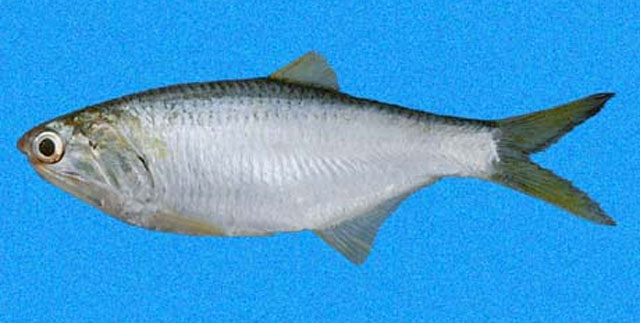| Engraulidae (Anchovies), subfamily: Engraulinae |
| 25 cm TL (male/unsexed); max.weight: 57.4 g |
|
pelagic-neritic; brackish; marine; depth range 0 - 50 m |
| Eastern Pacific: Magdalena Bay, Baja California on the Pacific coast and from San Felipe Bay, Gulf of California south to Gulf of Guayaquil, northern Peru. |
|
Dorsal spines (total): 0-0; Anal spines: 0-0; Anal soft rays: 26-29. Snout moderate, pointed, tip at or just above eye center; maxilla moderate, tip pointed and reaching onto pre-operculum (but not beyond), extending beyond second supra-maxilla; sub-operculum with a distinct triangular projection on hind margin; lower gill rakers fine and slender, increasing in larger fishes. Silver stripe along flank ,probably disappearing in larger fishes. |
| Occurs inshore along sandy beaches and in tide streams, forming large schools. Juveniles to about 7 cm occur on beaches and in bays, thereafter moving further from the shore. Feeds by filtering phytoplankton and zooplankton. |
|
Least Concern (LC); Date assessed: 01 November 2019 Ref. (130435)
|
| harmless |
Source and more info: www.fishbase.org. For personal, classroom, and other internal use only. Not for publication.
